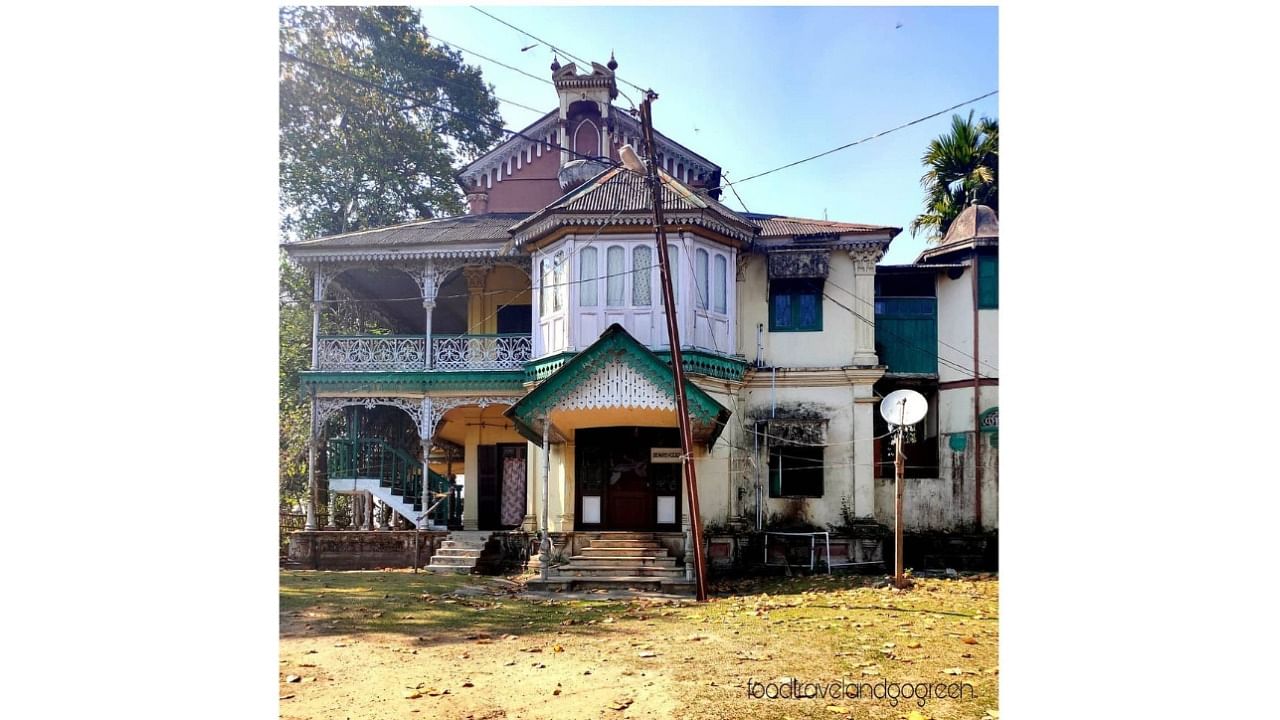
Matiabag Rajbari in Gauripur, Dhubri.
Credit: X/@Rituparna39
Dhubri, Assam: The pomp and grandeur may have waned, but descendants of Dhubri’s famed Gauripur royal family leave no stone unturned every year to organise Assam’s oldest family puja with reverence and piety of yore.
The 403-year-old heritage Durga Puja, with the unique distinction of its idol crafted out of ‘shola pith’ or Indian cork, has lost some of its erstwhile splendour but the people of Gauripur, irrespective of caste or creed, come out in large numbers to participate in the festivities, member of the royal Prabir Baruah told PTI.
The puja was first started in 1620 under the aegis of Raja Kabi Shekhar at Rangamati, but was shifted to Gauripur by King Pratap Chandra Barua in 1850 and since then, the 10-day festival has been celebrated with its traditions and rituals kept intact, he said.
“The zamindari system and its grandeur might no longer exist, but we have maintained the traditions and follow the various customs to the core,” Barua, who is also the president of the Gauripur Mahamaya Temple Management Committee, said.
Mahamaya is the ‘Kul Devi’ (the guardian goddess) of the royal family.
The royal family’s priest Arup Lochan Chakraborty performed the rituals before the idol of the goddess, made out of eight metals, and it was brought out of the Mahamaya Temple near the palace on a palanquin in a procession to the Durga Temple, a day after ‘Mahalaya’.
The parade in the erstwhile era was celebrated with splendor, as pointed out by eminent scholar and renowned Assamese litterateur, the late Rebati Mohan Dutta Choudhury (popularly known as Silabhadra), on several occasions.
"The procession was led by 20 to 25 elephants, where they were dressed in gold-footed silver bar. We wait eagerly to see this procession,” he wrote.
An idol of the goddess made out of the ‘shola pith’ is also set up for worship on the sixth day or ‘sasthi’. On the tenth day, it is taken in a boat to the confluence of the river Gadadhar with Brahmaputra where the idol is immersed.
The boatman belongs to a Muslim family, which has performed this particular ritual over centuries, Baruah said.
After the immersion, the royal family performs the ‘mangal chandi’ puja at the palace for the welfare and well-being of the people of Gauripur.
"We are very grateful to the people of Gauripur who participate in the festivities by providing help and cooperation to the members of the royal family,” he said.
The Gauripur royal family is known for many eminent personalities like the first actor to play the role of ‘Devdas’ Pramathesh Barua, Goalpariya singer Pratima Pandey Barua and the world’s only female mahout Parbati Barua, Baruah added.
According to historical records, one of the ancestors of the family, Narahari, was a member of the royal Mithila court and after a fallout with the ruler, he was patronised by the Coochbehar royals, who made him an administrator of their court in the 14th century.
Following the division of the Coochbehar kingdom, Narahari’s powers were curtailed and in 1620, one of his descendants Kabi Shekhar was bestowed the title of ‘Rajah’ or king by Mughal emperor Jahangir.